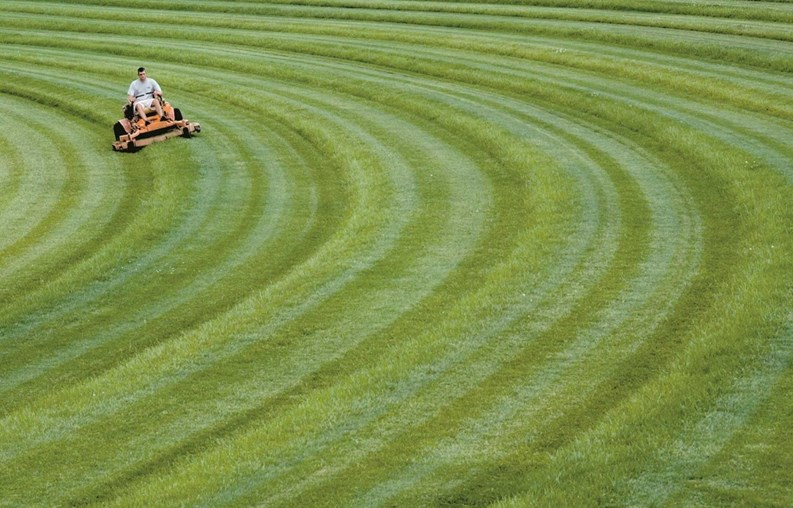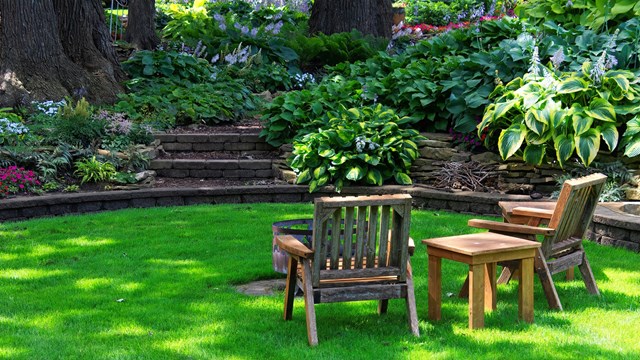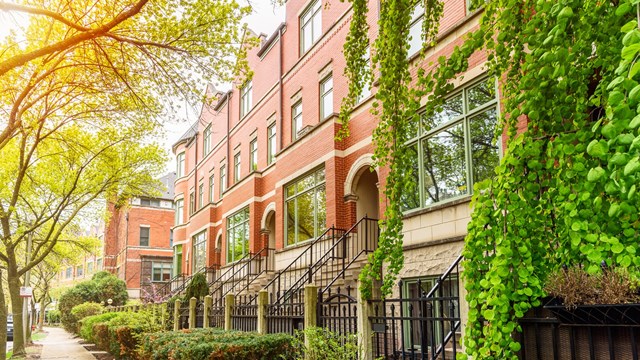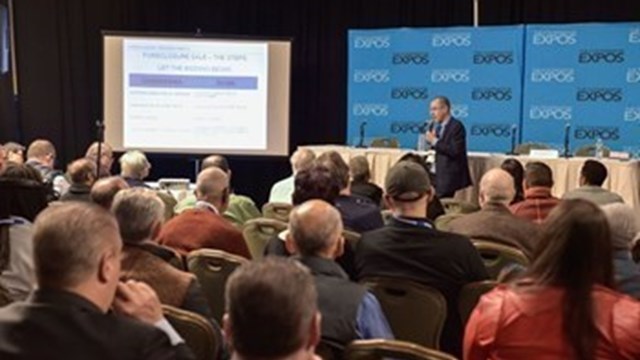Chicago is a city known far and wide for its harsh weather—and like its residents, Chicago's lawns are built to withstand the icy winter blasts off Lake Michigan. That doesn't mean that your condo or HOA's lawn doesn't need a little tender loving care every now and again, however. A lush, green swath of lawn is an asset to its community—it increases curb appeal, beautifies the property, and ultimately increases resale values.
Kentucky Blues
Kentucky Blue Grass, the most commonly found type of lawn covering found in the greater Chicagoland area, is hardy enough to withstand the region’s harsh winter weather while adapting to its varying amounts of sun and shade.
James Wiecek, horticulturist at Country Bumpkin Garden Center in Mundelein, says that in addition to the Kentucky Blue Grass, he usually recommends that customers have a variety of grass types in their lawn. “We recommend that customers have a combination of grasses,” he says. “Variety gives you a quicker growth in the spring.”
Although diversification is important, Wiecek also emphasizes the importance of minimizing the use of Southern-climate grasses because of Chicagoland’s varying climate—which, as we all know, can be bitter cold in the winter and very hot in the summer. Wiecek says Southern-climate grasses can take longer to appear in the spring after a harsh winter and can go dormant earlier in the fall as cold weather approaches.
“You want to have something that’s hardy up here,” he says. “Something that takes the winter better is going to fill in a lot nicer and give you a nice solid lawn in the spring.”
Reap What You Sow
Most grass types found on residential lawns are not naturally occurring—they're sodded in after the construction of a home or development is complete. Wiecek says that grass seeds are usually planted on a rural farm, then clipped in layers and shipped to developers or home-builders for installation. Sod strips can range from 15 inches to 2 feet in width, and come rolled up like long strips of green carpet.
Wiecek says that during installation, it is important to lay the sod layers close together to avoid gaps. “With sod, it’s important to make sure you fit the rolls and pieces together really well, because if you have a space between them you’re going to get a lot of drying out,” he says. “You have to fit it together almost like you’re putting together a quilt.”
Homeowners often encounter problems while trying to maintain a healthy lawn, say the pros. Wiecek says that the most common error homeowners make in lawn care maintenance is over-cutting their grass.
“Proper mowing height is probably the most critical thing that you can do to keep your lawn looking right,” he says. “You want to have it long enough so that the grass is able to grow and put down a good root system with that. If you cut it really close all the time, it will give you a nice manicured look, but it’s not the best thing for the lawn.”
Lucca Levato, operations manager at Chicago Service Group in Chicago agrees and adds that homeowners often over-fertilize their lawns as well.
“People want to instantly green their lawn, but over-fertilization can stunt or kill turf,” Levato says. “Homeowners should apply fertilizer at the right rate and watch as it greens and grows over the course of weeks.”
Levato says that it is also important for homeowners to do core aeration, which is a process in which machinery punctures small holes throughout the lawn to allow water and nutrients to get deeper into the soil. If aeration is done in coordination with fertilizing, grass growth can be increased.
“If you aerate and do fertilization right after that, food will go down into the root zone quickly and then the rain will carry it down,” Wiecek says. “So you get a lot of growth really quick that way.”
Wiecek usually recommends that his customers fertilize their lawns four times a year—once in the spring, twice throughout the early and mid-summer and once in the fall.
“Grass does a lot of growth in the late-fall and early-winter until the ground freezes,” Wiecek says. “There is food that is specifically targeted for fall feeding, and it helps grass to put down a lot of roots during winter time so that in the spring you get a nice splash of growth.”
Water & Fertilize
Another important component of keeping a lawn healthy during the scorching summer months is consistent watering. In Chicagoland, often times July and August can be difficult growing season months because of high heat and occasional droughts.
“If you don’t have a lot of rain but are able to irrigate, it’s important to get some water on it,” Wiecek says. “Generally if you can even get at least an inch per week that will keep it green and grow.”
Levato says that chemical application for weeds, insect inspection and fungus management are also important components of a healthy yard.
“Fungus can grow in your lawn if you’re getting too much water during a rainy season,” Levato says. “If it’s caught right away, you can knock it out with one treatment, but doing weekly general maintenance you can see them easily.”
Chemicals that contractors apply for fertilization as well as fungus and insect removal are usually safe, but Wiecek recommended that animals and children stay off of lawns that have been sprayed at least until the chemical has dried.
Many landscaping companies have begun to move away from phosphorous-based fertilizers because of aesthetic concern for phosphorous runoff into neighboring lakes and ponds.
“A lot of that is fertilizer and phosphorous in particular that leeches out of the area,” Wiecek says. “In heavy rains it runs down into retention ponds and it causes algae to explode growth-wise.”
Homeowners looking to go a more natural route also have organic fertilization options.
“Organics are primarily made from animal manures and other products,” Wiecek says. “They give you a natural product that you can put down that isn’t quite as potent or fast-acting as chemicals, but it’s an all-natural product.”
Bringing in the Pros
Often times, calling a professional is an easier way to catch problems before they get out of hand. Levato says that calling a specialist is a great way to ensure that problems are solved.
“You can forget about lawn—you come home from work your lawn is taken care of,” Levato says. “The contractor usually spots things themselves, but if you spot something you call them and it’s taken care of.”
Wiecek agreed that involving a contractor for yard maintenance often times can take a load off of the inconveniences of owning a home as well as other responsibilities.
“As people, we’re always putting off feeding the lawn or doing the oil changes on our cars just by nature,” Wiecek says. “And with lawn care, if you’re even two weeks late with fertilization, it’s hard to go back and recover. With contractors, they’re out there and it’s done on a timely basis and not forgotten about.”
Contractors that provide chemical fertilization and other insect or fungus removal are required to have a Horticulture Application license. Levato says that contractors should have at least one licensed person on staff, and often times companies require more.
“You can acquire a license through local colleges as well as the Illinois Landscaping Association,” Levato says. “It’s a state license but colleges can give you it.”
Whether homeowners choose to rely on a professional or to do some minimal lawn care maintenance themselves, lawn health is something to pay close attention to, regardless of the climate.
Rosie Powers is a freelance writer and reporter living in Chicago and a frequent contributor to The Chicagoland Cooperator.







Leave a Comment